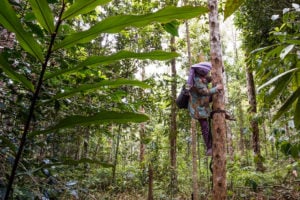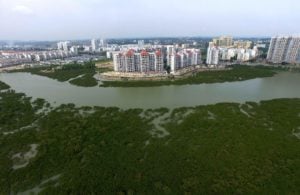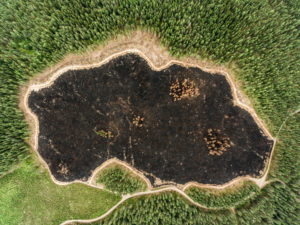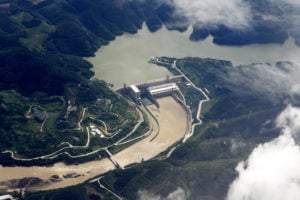In May, Campaign for Nature announced that Southeast Asian nations were showing growing support for the goal of protecting 30% of the planet’s land and oceans by 2030.
Dr Zakri Abdul Hamid is ambassador for the campaign, which is a partnership between the Wyss Campaign for Nature and the National Geographic Society. He is also the founding chair of the Intergovernmental Science-Policy Platform on Biodiversity and Ecosystem Service (IPBES), and a member of the Scientific Advisory Board for the Islamic Development Bank.
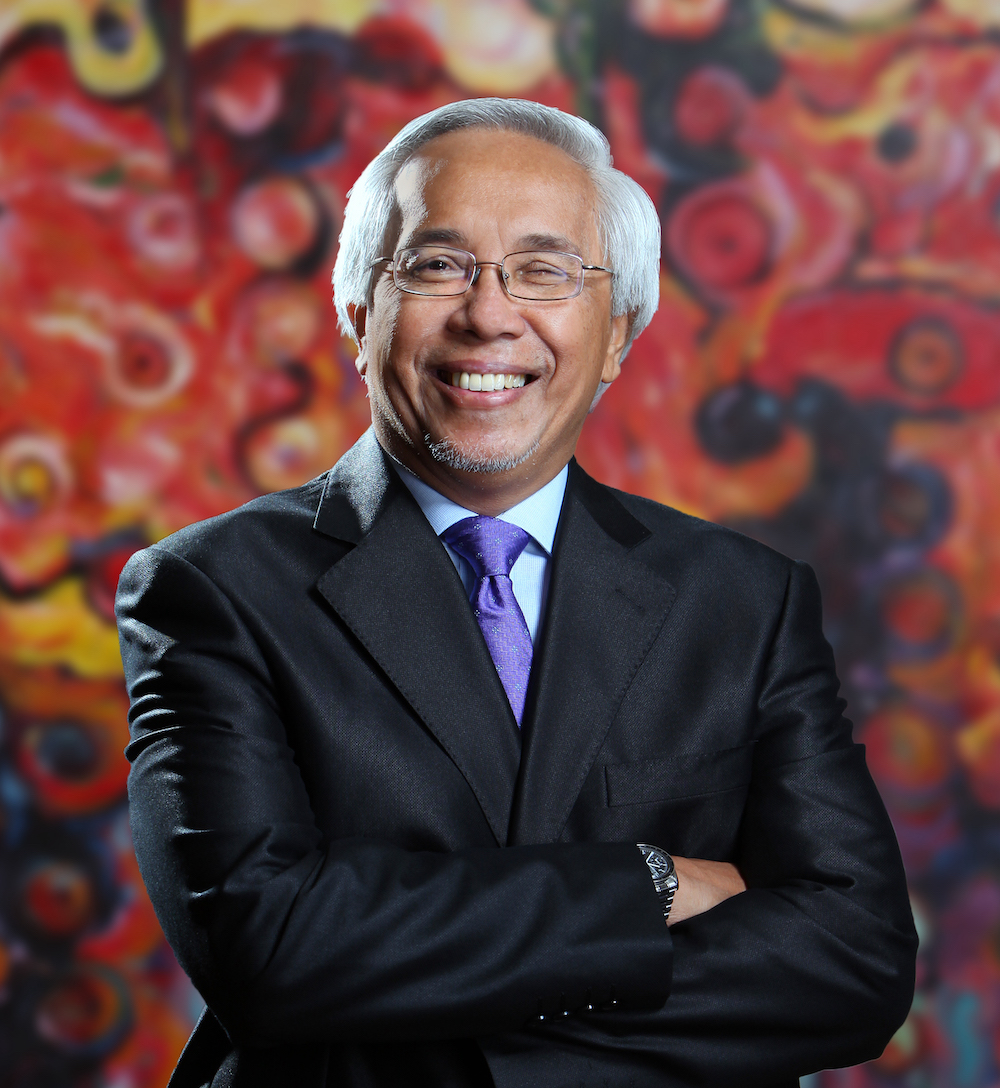
He talked to China Dialogue on the role China can play on the road to the “30×30” goal and how efforts can proceed with respect to indigenous peoples.
Tyler Roney: How would you respond to claims that the 30×30 target could risk mass displacement of indigenous peoples?
Dr Zakri Abdul Hamid: We recognise that there have been instances where the creation of protected areas has violated indigenous rights and territories. This 30×30 goal aims to be a new paradigm for conservation that learns from the mistakes and lessons from the past.
To effectively and equitably meet this increased target, securing indigenous and community land tenure is central, as they are the protectors of the most biodiverse sites in the world.
It is critical that the whole Global Biodiversity Framework advances a rights-based approach to biodiversity conservation. Indigenous peoples and local communities should be engaged as partners in the design and management of these conserved areas. The framework must explicitly safeguard their rights, ensuring free, prior and informed consent and alignment with the UN Declaration on the Rights of Indigenous Peoples.
The High Ambition Coalition for Nature and People has created a task force to dialogue with the International Indigenous Forum on Biodiversity about these concerns.
A United Nations plan for living in harmony with nature by 2050, organised under the Convention on Biological Diversity (CBD).
The framework contains 21 “action targets” to be achieved by 2030. These include protecting at least 30% of the world’s land and oceans; reducing the rate of introduction of invasive species by 50%; cutting the use of pesticides by two thirds; eliminating the discharge of plastic waste; and redirecting or repurposing incentives harmful for biodiversity.
How will you monitor and measure success?
The fact that the 30×30 target is included in the latest draft of the negotiated text for the post-2020 Global Biodiversity Framework is already an early indication of how seriously delegates have taken the proposal. Two other key aspects of the 30×30 are the mobilisation of financial resources to ensure protected areas are properly managed, and ensuring the role of indigenous peoples and local communities in biodiversity conservation is recognised and well-respected. However, Kunming [COP15] is still far off. As they say, “nothing is agreed until everything is agreed.”
Although the membership of the High Ambition Coalition is growing, some key countries are still not in the tent. Brazil and China, two big and megadiverse countries, have still not signed up. With the exception of Cambodia, the 10 member states of ASEAN [Association of Southeast Asian Nations] – three of them megadiverse – have still not decided to endorse the 30×30 plan.
What are some areas of cooperation with China?
China’s hosting of the Convention on Biological Diversity (CBD) COP15 meeting in Kunming is one of many steps that signal the country’s leadership in the international arena. Like many developing countries, it has a plethora of problems in meeting the three objectives of the CBD (the conservation of biological diversity; the sustainable use of the components of biological diversity; and the equitable sharing of the benefits arising out of the utilisation of genetic resources). Its comprehensive response is currently embodied in its National Biodiversity Conservation Strategy and Action Plan (2011-2030). The plan notes that the serious loss of biodiversity is yet to be reversed. Overexploitation of natural resources, project construction and climate change have significantly affected the survival of species and the sustainable use of biodiversity.
China’s experience in overcoming the above challenges can be shared with other countries. It has developed major plans and programmes on biodiversity conservation, such as the China Nature Reserves Program, China’s Masterplan for Ecological Conservation, and the China Program for Conservation and Use of Biological Resources. China’s preparedness to be a member of the High Ambition Coalition would be a major boost to global conservation efforts.
How can governments ensure that newly protected areas do not become ‘paper parks’?
Adequate long-term finance, effective management, good monitoring and evaluation, strict enforcement and community buy-in.
Beyond 30×30, how can ASEAN nations better engage in cooperative conservation efforts through international organisations?
While occupying only 3% of the Earth’s surface, the ASEAN region boasts globally significant terrestrial and marine biodiversity that includes 18% of all species assessed by the International Union for Conservation of Nature. Three of the ASEAN member states, namely Indonesia, Malaysia and the Philippines, are among the world’s 17 megadiverse countries. The region’s leaders are fully aware of their responsibility as global citizens and the need to conserve biodiversity and to use its components in a sustainable manner.
As one of the original participants representing my country [Malaysia] in the negotiations of the UN Convention on Biological Diversity some 30 years ago, it is my belief that eventually most, if not all, the ASEAN member states will sign-up for the 30×30. While these developing countries put a priority on socio-economic development and human wellbeing, sometimes to the detriment of the environment, protecting nature is still in our DNA. The pandemic is still creating untold destruction to people’s lives in the region. It is not lost on us that its underlying cause is our assault on nature.
The pandemic is still creating untold destruction to people’s lives in the region. It is not lost on us that its underlying cause is our assault on nature.Dr Zakri Abdul Hamid
Two recent examples will illustrate to you how ASEAN has stepped up to the plate to play its role in international cooperation on conserving biodiversity. One is the “Heart of Borneo” project which was launched in 2007 with the assistance of the WWF in the territories of Brunei Darussalam, Indonesia and Malaysia. Covering an area of approximately 745,567 square kilometres, equivalent to the size of England and Scotland together, it is one of the largest transboundary rainforests remaining in the world. But the Heart of Borneo is not just a treasure trove of biodiversity, it is also a source of life and livelihood for people, providing ecological services for at least 11 million indigenous peoples and local communities.
Secondly, on the marine side, ASEAN countries Indonesia, Malaysia and Philippines joined forces with Papua New Guinea, the Solomon Islands and Timor-Leste to establish the Coral Triangle Initiative in 2007 with the support of Conservation International. Spanning 6 million square kilometres, the Coral Triangle has the highest coral and reef fish diversity globally and provides vital spawning grounds for whales, turtles and other charismatic species. And one third of the people [living in the region] depend on these waters for their livelihoods. This unique multilateral partnership is yet another demonstration of ASEAN readiness in international collaboration to conserve marine biodiversity, tackle climate change and address food security.
